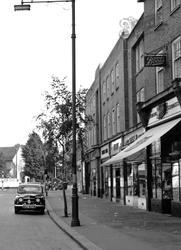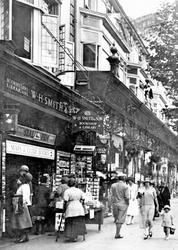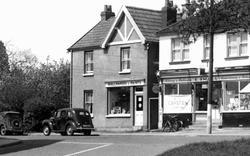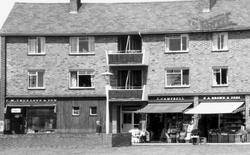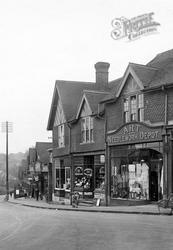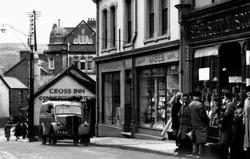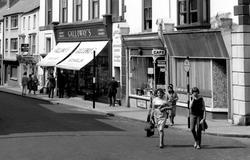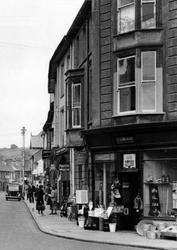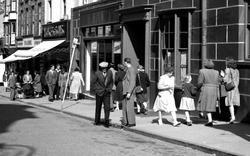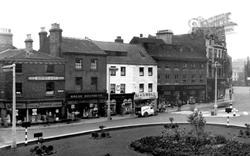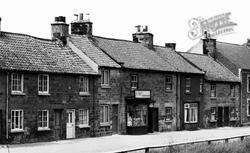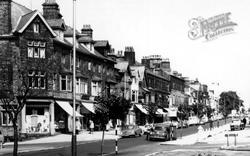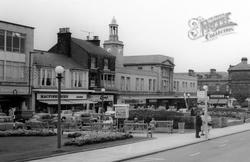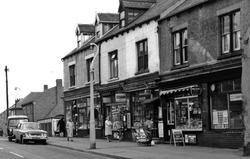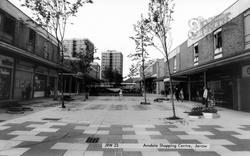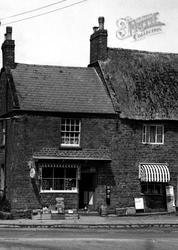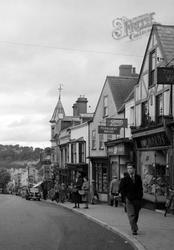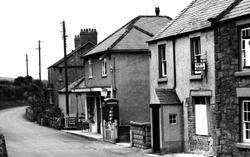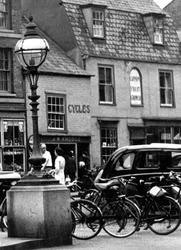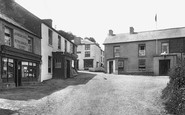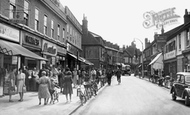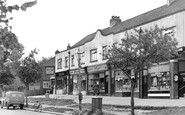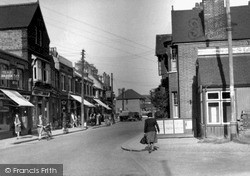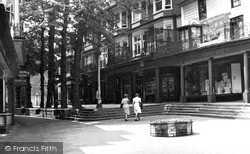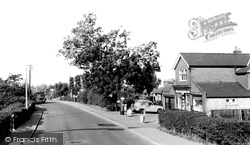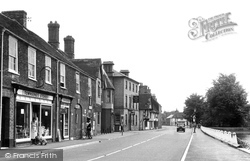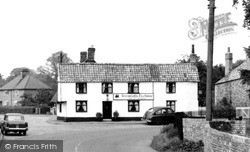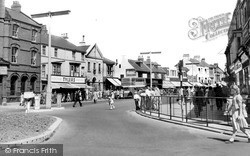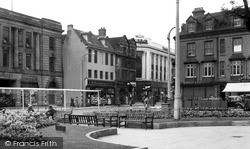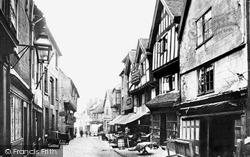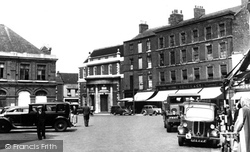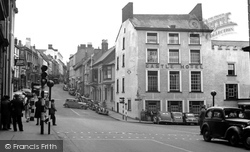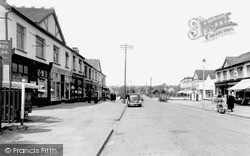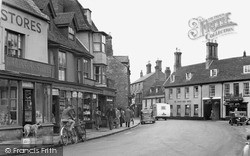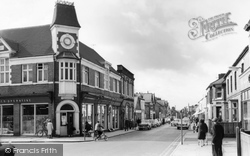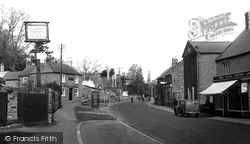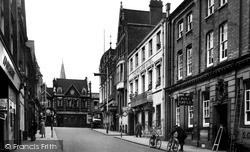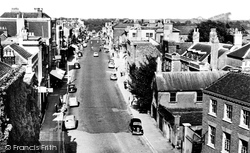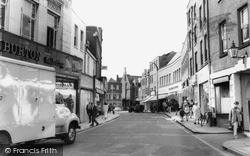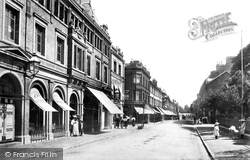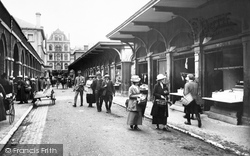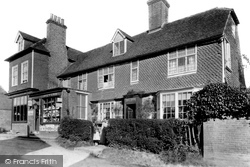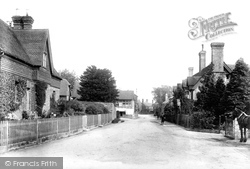Places
10 places found.
Those places high-lighted have photos. All locations may have maps, books and memories.
Photos
2,534 photos found. Showing results 1,601 to 1,620.
Maps
71 maps found.
Books
Sorry, no books were found that related to your search.
Memories
8,173 memories found. Showing results 801 to 810.
I Used To Live Here
I was born in this lovely village but moved when I was about 3 years old. My great-grandmother Dorothy Thomas lived in Ty Llwyd, a small cottage on the road facing the sea front. I remember looking out of the window at night ...Read more
A memory of Ferryside by
Happy Memories Of South Woodford
My family lived in Hillcrest Road, South Woodford from 1960 to 1973. I had a very very happy childhood there (am still happy though) but had to move to Brighton to attend a deaf school and to avoid the need ...Read more
A memory of South Woodford in 1965 by
Family History In Belvedere
I have two separate enquiries for my family history research in Upper and Lower Belvedere. In Upper Belvedere there was a sweet and paper shop which also sold toys called Derrett & Dorman's. I believe that I ...Read more
A memory of Belvedere by
The Happy Days
To Mary Muir, I remember you very well. Those were the days. I started school then in February aged 4 and a half years old. I remember all my teachers. I wonder if these names ring a bell, Miss Todd, Miss Taylor, Miss Cuthbert, ...Read more
A memory of Lumphinnans in 1957 by
That Old Shoe Shop
The old shoe shop was called "Caiger's Boot Store" and was run by my two elderly great aunts, Ruth & Kizz (Kezia) untill 1969. Their father, Frederick Caiger who married the previous owner's daughter, owned and ran the ...Read more
A memory of Wokingham by
Fetcham In The Forties And Fifties
This parade of shops is in my memory for ever - my family moved to Orchard Close - which starts just beside the post office on the right of the picture - in 1946. My brother was five and I was six months old. ...Read more
A memory of Fetcham in 1950 by
Early Years In Park Road
Born in 1947 to Ted & Cred Fowles, I lived in 3 Park Road until 1955 when I moved down the hill to Southsea. I started Tanyfron primary school in 1951 and went on to Penygelli Secondary school, Coedpoeth, in 1958. ...Read more
A memory of Tanyfron by
The 1950s
I was born at the maternity hospital in 1951, we lived at 3 St Oswalds Crescent and my granny and grandad lived close by on Park Road. I attended St Oswalds C of E School - I had a lady head teacher whose name escapes me before moving ...Read more
A memory of Ashbourne in 1958 by
Licensed Game Butcher
Our gt uncle Edward Cope Statham, born in Barrow in Furness, was a licensed game butcher in Longton. He is on the 1901 census, aged 24, as lodging in Trentham Road so don't know if the shop was there too but we do have a ...Read more
A memory of Longton in 1900 by
When I Joined The Royal Air Force 22nd May 1952
I attended the Presbyterian Church Rossett Primary School in Station Road before attending the new school near Tom Bishop's shop, where I first bought my first cigarettes, Willy Woodbines, 5 for a ...Read more
A memory of Rossett in 1952 by
Captions
3,478 captions found. Showing results 1,921 to 1,944.
Basically a grocery shop and off-licence, it also accommodated Wickford's post office around the time of our picture. The in-store café can be seen to the extreme left.
Formerly called The Parade, this fashionable rendezvous and shopping parade was first laid out in 1638, taking its current name from the grey concave tiles with which it was paved in 1697 at the instigation
This solidly-built Edwardian shop is still trading as the Post Office, despite some alteration; it stands on the way down to the former station site.
The Copper Kettle tearooms used to be near the Royal Oak (left), but it has now closed and two fast food shops have appeared. The Royal Oak is the sole surviving public house on the Causeway.
The village now boasts a general store, a pottery with coffee shop and two garages with a cafe.
Well-known shops here include Burtons, Woolworths and Timpsons.
Built in the 1750s, Martock's Market House originally held a row of shambles or butchers' shops.
F W Woolworth's, with its large window display and traditional sign, occupies a building which dates back to the 15th century, while the foundation stones of Burton's menswear shop, with its flamboyant
Coventry has undergone massive redevelopment since the end of the second world war, not only with projects such as the Broadgate shopping precinct, but an American-inspired partly-elevated ring-road
A medieval market town, its present Town Hall only dates from 1891, seen here before the tepid 1956 Neo-Georgian facade was added with shops to the ground floor.
The Lloyds Bank on the left is still in place today but the Boots beyond it has been relocated to the new shopping development on the riverside.
What would the fishermen have made of shops such as Dressywear (left)?
sometimes known, particularly the final part of the process which was pure theatre, has taken on an almost mythical quality, celebrated in drawing, engraving, painting, and metal sculpture at Meadowhall shopping
Tomlinson's Stores is now the premises of Age Concern, and Goss Bros is now a tea shop.
Havelock Street is a terrace of Victorian artisan cottages, while Station Road remains the principal shopping street. The Co-op is still the Co-op but with a less attractive modern shopfront.
The baker's with its characteristic 'Hovis' sign is still a baker's, and Duston retains other shops, unlike many Northamptonshire villages.
All the buildings on the left have been replaced by the modern Swansgate shopping centre. Other change includes the demolition of the stuccoed Midland Hotel on the right.
This photograph of the town was taken from the tower of St Thomas's church at the top of the High Street, depicting an elegant mix of Georgian houses, bow-fronted cottages and covered shop fronts.
Because of the relatively small shop sizes the larger retail chains, such as Boots and Burtons, have moved to bigger and better premises in the new Horsefair development - a successful retail location
The woman and young girl on the left are standing in the doorway of the local piano shop.
The delightful open-fronted small shops are still largely unchanged today.
This shop also acted as an agent for the local dye works. Goudhurst originally prospered as a result of ironworking, and then later cloth making and dyeing.
On the left are two small shops owned by Mr Bushell and Mr Ruddock and, in the distance, the Seaview Hotel.
All we can see in this photograph are cottages and the village shop. It had a weekly market from 1253 until it was closed in 1982. The last bare-fisted boxing match was held in Wadhurst in 1863.
Places (10)
Photos (2534)
Memories (8173)
Books (0)
Maps (71)


